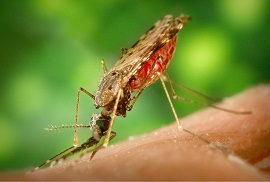
Different international organizations identify and classify different zoonosis, illnesses transmitted to humans from animals. People working in contact with animals are at risk of transmission, so applying the basic security measures is fundamental in order to reduce the risks.
22 june 2016
Zoonosis are illnesses transmitted from animals to humans but can affect both. Generally, though, zoonosis cases are transmitted from animals to humans. These types of illnesses have been collected in a professional illness chart of the Social Security system, which stablishes criteria for their notification and register as indicated by the Royal Decree 1299/2006 from 10 November.
The dangers of zoonosis are very important because they are transmitted and can, hence, become epidemics and affect not only workers but also the population at large. It is then necessary to apply prevention plans which are adequate in order to reduce the risk of suffering zoonosis at work as much as possible.
Workers who keep a daily contact with animals are more susceptible to suffering zoonosis in their job post
Depending on the infectious agent, these illnesses are divided into bacterial, viral or parasitic. Experts in these types of illnesses from the World Health Organisation (WHO) divide zoonosis into four categories depending on the biological cycles of the infectious agents which cause this illness.
- Direct Zoonosis
- Cyclezoonosis
- Metazoonosis
- Saprozoonosis
Likewise, the International Labour Organization (ILO) classifies them according to the group of animals which act as the source of the infection.
- Domestic animals and poultry. They transmit diseases such as the anthrax, brucellosis, tuberculosis, etc. Among the most susceptible workers we find stockbreeder, farmers, vets, etc.
- Wild animals and prowlers or synanthropic. They can transmit the bubonic plague, tularemia, salmonellosis, etc. Those more exposed are hunters, woodcutter, horticulturist and wild animal curators.
- Laboratory animals. This is one of the most dangerous groups as labs are places where there is a higher amount infectious agents, even if it is in a controlled way. Without the appropriate prevention measures in these environments, workers may catch severe diseases.
Basic prevention measures
- Eliminating reservoirs and vectors. Identifying and eradicating the main emission focuses such as an episode of zoonosis at a farm.
- Using appropriate protection equipment as stated at the regulations and labour security recommendations in each case.
- Enabling vaccination and preventive treatment to workers in specific jobs which hold a higher risk of transmission.










